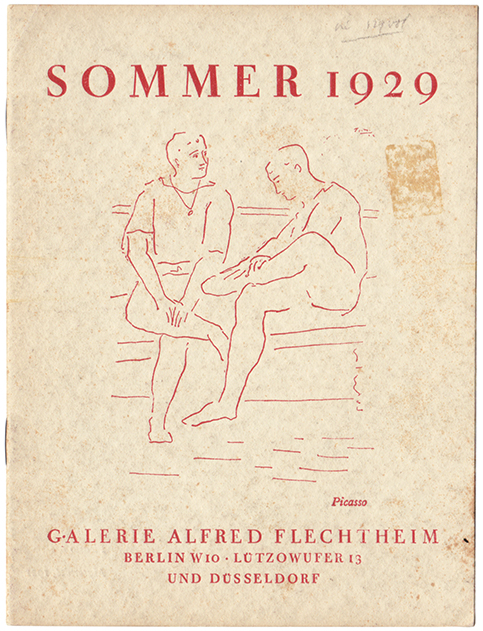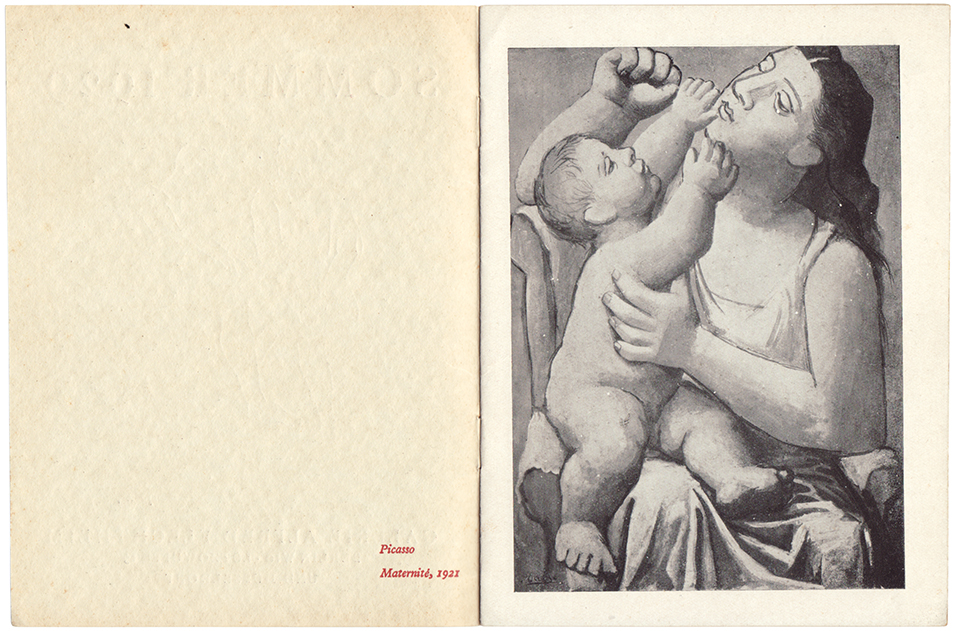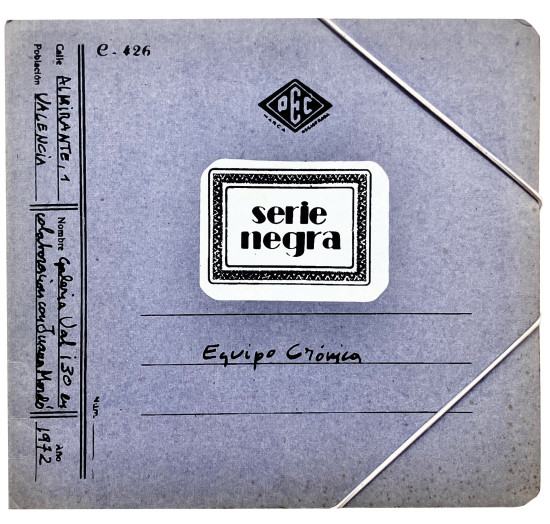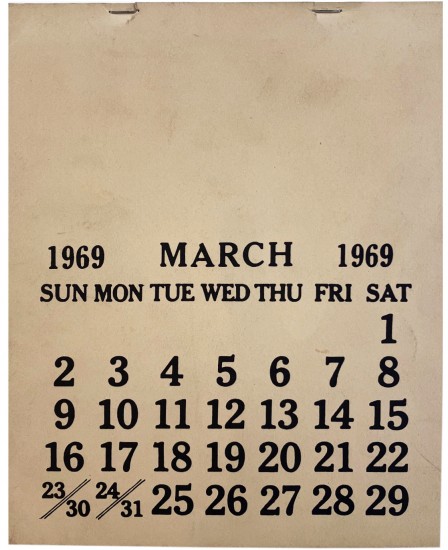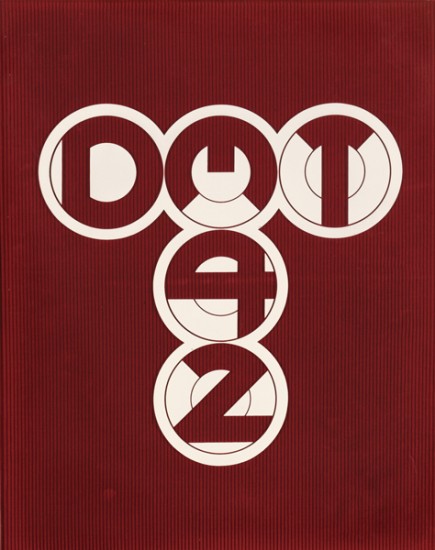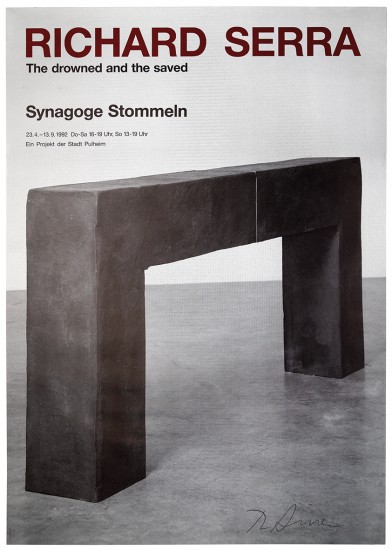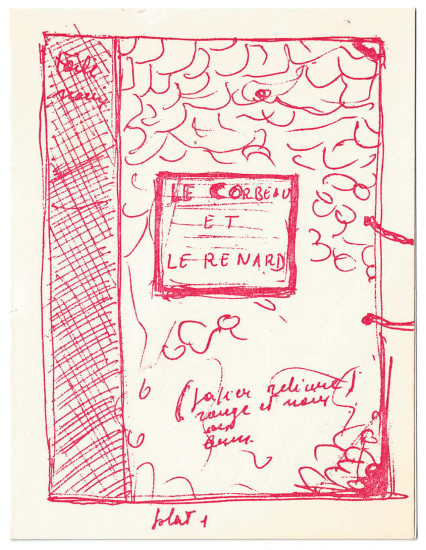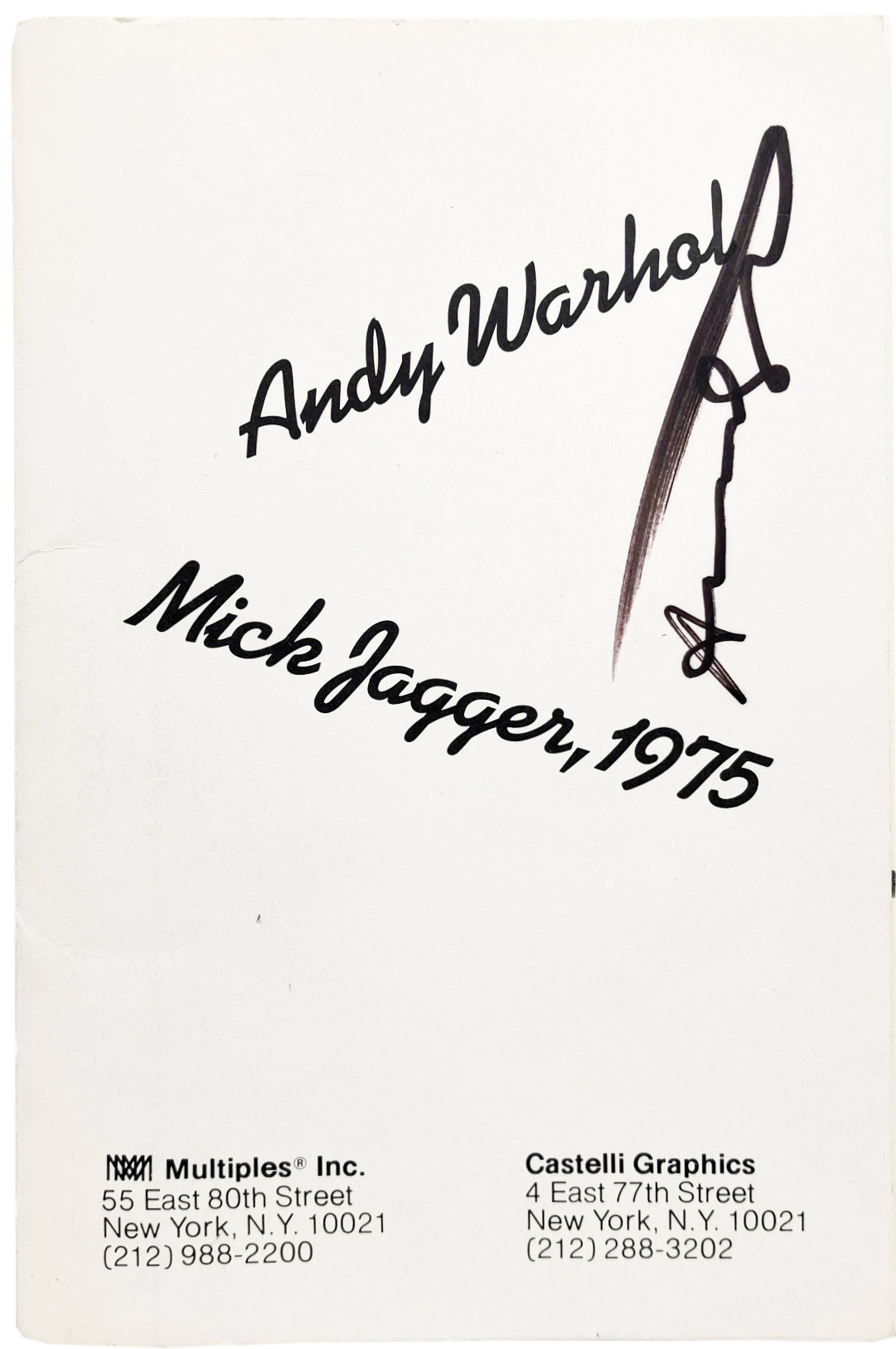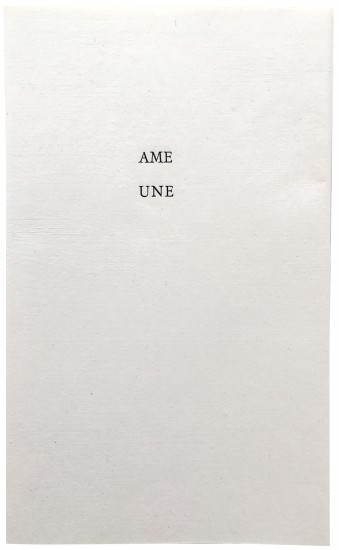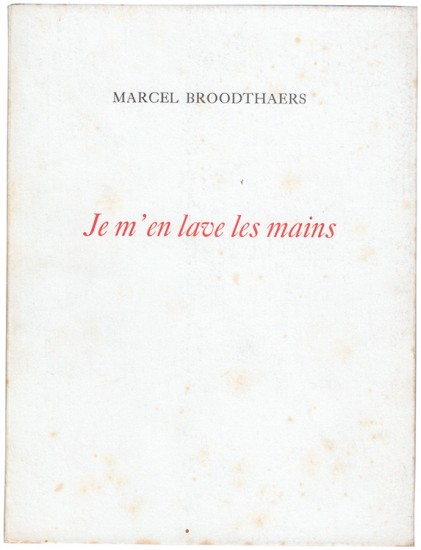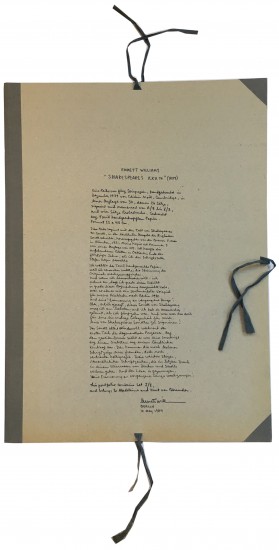Sommer 1929
Picasso, Matisse, Derain, Munch et al. Flechteim, Galerie Alfred
Berlin / Düsseldorf. Otto von Holten for Galerie Alfred Flechtheim. 1929
The scarce catalogue booklet published by Galerie Alfred Flechtheim: 'Sommer 1929'.
The artists included, and their works, are the following: Picasso ('Maternité', 1921, and 'Femme au Fauteuil Rouge', 1929), Matisse ('L'Odalisque'), Munch ('Der Blaue Knabe'), Maillol ('Venus', bronze, 1928), Derain ('Cathérine Hessling (Mme Jean Renoir)', 1925), Hofer ('Italienerin', 1929), Grosz (a drawing), Beckmann (Der Peruanische Soldat Trinkt', 1929), Braque ('Dieppe', 1928), Klee ('Die Schwarzen Schiffe', 1927), Gris ('Compotier et Carafe', 1923), Laurencin ('Alcools', 1910, formerly in the collection of Guillaume Apollinaire), Léger ('Composition', 1928), Belling ('Schmeling', bronze, 1929) and Sintenis ('Das Fohlen', bronze, 1929).
The eponymous Galerie Alfred Flechtheim was established in 1913 in Düsseldorf before further branches were opened in Berlin, Vienna, Frankfurt and Cologne. Flechtheim (1878 - 1937), who inherited an industrial fortune, espoused Impressionist, post-Impressionist and abstract art but his business suffered during the First World War, eventually collapsing. He re-established himself in 1919 - apparently the Berlin parties at the gallery were legendary - exhibiting the works of important French and German artists, Picasso and other Cubists, and so on.
The rise of the Nazis put enormous pressure on Flechtheim, considered a particular proponent of 'Entartete Kunst', and after their ascendancy, Flechtheim was forced to flee, first to Paris, then to London where he organized exhibitions. The Galerie Alfred Flechtheim was closed in March, 1937, the month of Flechtheim's own death in London. Flechtheim's stock and collection, seized by the Nazis, was dispersed and attempts by his heirs for restitution are ongoing.
The front cover of the catalogue shows a letterpress illustration of a Picasso drawing of dancers at the Paris Opera.
The catalogue is scarce: we can trace copies at the Tate and the V & A in the UK, at the Kunstmuseum Basel and Kunsthaus Zürich in Switzerland, at the Stedelijk, two copies in Berlin (at the Staatsliche Museen and Freie Universität), the National Museum of Western Art in Tokyo and, finally, two copies in the US, at MoMA and Northwestern only.
The artists included, and their works, are the following: Picasso ('Maternité', 1921, and 'Femme au Fauteuil Rouge', 1929), Matisse ('L'Odalisque'), Munch ('Der Blaue Knabe'), Maillol ('Venus', bronze, 1928), Derain ('Cathérine Hessling (Mme Jean Renoir)', 1925), Hofer ('Italienerin', 1929), Grosz (a drawing), Beckmann (Der Peruanische Soldat Trinkt', 1929), Braque ('Dieppe', 1928), Klee ('Die Schwarzen Schiffe', 1927), Gris ('Compotier et Carafe', 1923), Laurencin ('Alcools', 1910, formerly in the collection of Guillaume Apollinaire), Léger ('Composition', 1928), Belling ('Schmeling', bronze, 1929) and Sintenis ('Das Fohlen', bronze, 1929).
The eponymous Galerie Alfred Flechtheim was established in 1913 in Düsseldorf before further branches were opened in Berlin, Vienna, Frankfurt and Cologne. Flechtheim (1878 - 1937), who inherited an industrial fortune, espoused Impressionist, post-Impressionist and abstract art but his business suffered during the First World War, eventually collapsing. He re-established himself in 1919 - apparently the Berlin parties at the gallery were legendary - exhibiting the works of important French and German artists, Picasso and other Cubists, and so on.
The rise of the Nazis put enormous pressure on Flechtheim, considered a particular proponent of 'Entartete Kunst', and after their ascendancy, Flechtheim was forced to flee, first to Paris, then to London where he organized exhibitions. The Galerie Alfred Flechtheim was closed in March, 1937, the month of Flechtheim's own death in London. Flechtheim's stock and collection, seized by the Nazis, was dispersed and attempts by his heirs for restitution are ongoing.
The front cover of the catalogue shows a letterpress illustration of a Picasso drawing of dancers at the Paris Opera.
The catalogue is scarce: we can trace copies at the Tate and the V & A in the UK, at the Kunstmuseum Basel and Kunsthaus Zürich in Switzerland, at the Stedelijk, two copies in Berlin (at the Staatsliche Museen and Freie Universität), the National Museum of Western Art in Tokyo and, finally, two copies in the US, at MoMA and Northwestern only.
pp. 16. 12mo. (158 x 119 mm). 16 monochrome illustrations recto and verso throughout on glossy paper. Original publisher's printed textured paper wrappers, stapled as issued with printed titles in red to front cover with illustration after Picasso and advertisement and printer's credit to rear.
#47125
